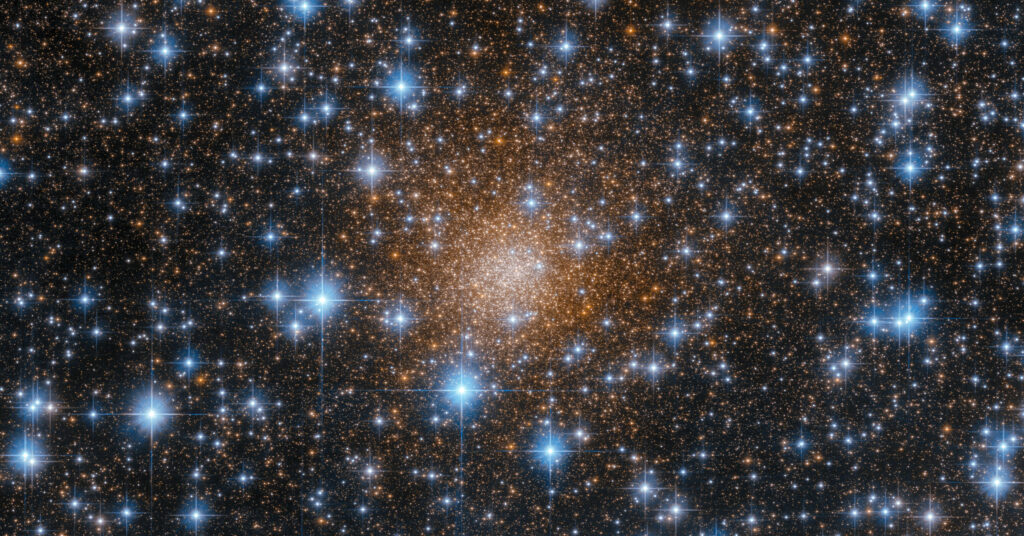The presented image was obtained using the WFC3 camera installed on board the Hubble telescope. It clearly demonstrates the two main types of stars inhabiting our Milky Way.

In the center of the image, you can see the globular cluster Liller 1. It is located at a distance of 30 thousand light-years from Earth in the bulge region of our galaxy. The muted red tones of the Liller 1 stars are partially “shaded” by the brilliance of younger and hotter luminaries scattered throughout the Hubble image.
Getting an image of Liller 1 was not an easy task. Despite the relatively small distance by astronomical standards, its observations are seriously complicated by dust clouds filling the center of the Milky Way, which scatter visible light. Red light mainly passes through them, as well as infrared waves. Fortunately, the WFC3 camera is sensitive to both types of waves, which made it possible to photograph the “hidden” cluster.
Liller 1 is of considerable interest to astronomers because of its stellar population. As a rule, globular clusters consist only of very old luminaries whose age is comparable to the age of the Universe. But Liller 1 is an exception to this rule. Observations have shown that it is inhabited by two main groups of stars, one of which is 12 billion years old, and the other is only 1-2 billion years old. This suggests that somehow Liller 1 retained the ability to form new luminaries for a very significant period of time.
Earlier we wrote about how black holes destroy thousands of stars in clusters.
According to https://esahubble.org
Follow us on Twitter to get the most interesting space news in time
https://twitter.com/ust_magazine

